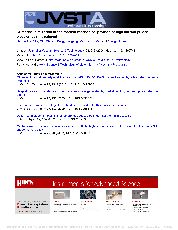摘要
Physical models and numerical simulations are used to describe the thermal-mechanical process induced by high current pulsed electron beam (energy E = 10-40 keV, energy density in a pulse S= 1-6 J/cm(2), pulse duration tau = 0.5-5 mus) irradiation. The temperature simulation reveals ultrahigh heating and cooling rates on the order of 10(8)-10(9) K/s, rapid melting and re-solidification within microseconds in the range of micrometers in depth, and evaporation of the surface material. The temperature-induced nonstationary thermal stress fields consist mainly of quasistatic stress and thermal stress waves. The thermal stress wave is a typical nonlinear wave with small amplitudes of about 0.1 MPa, which manifests, however, a strong impact on materials structure and properties far beyond the heat-affected zone. The quasistatic stress is coupled with the temperature field and the maximum compressive stress in the near surface layer reaches several hundreds of MPa, which is sufficiently high for metallic materials to deform. According to the calculation and experimental results, the strengthening mechanism of metals under the thermal impact is suggested to be the work-hardening with high deformation rates, which reach about 10(4)-10(5) s(-1).
- 出版日期2004-6
- 单位大连理工大学
